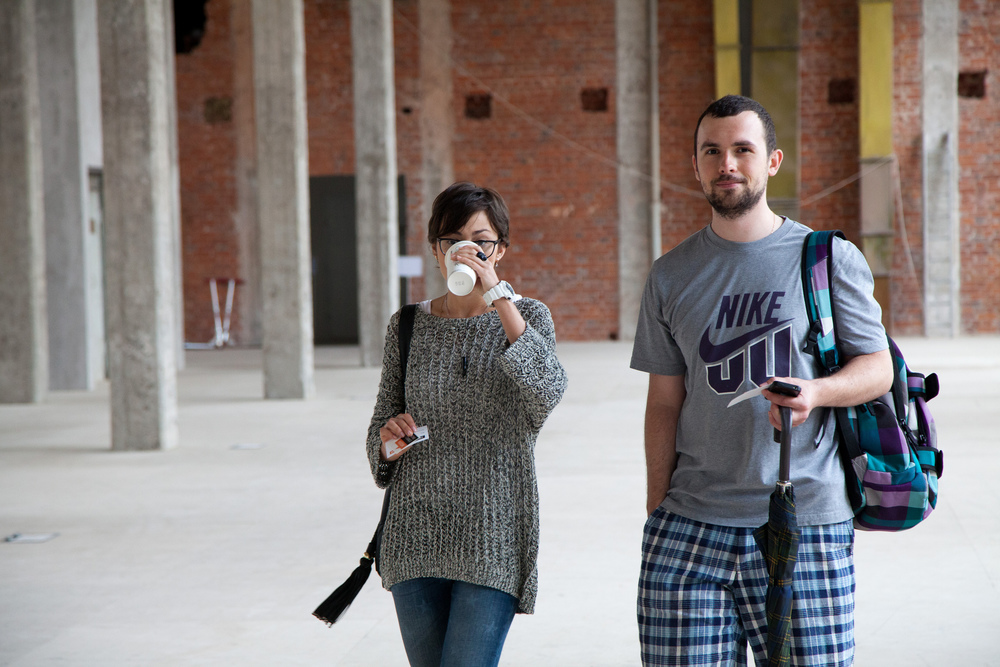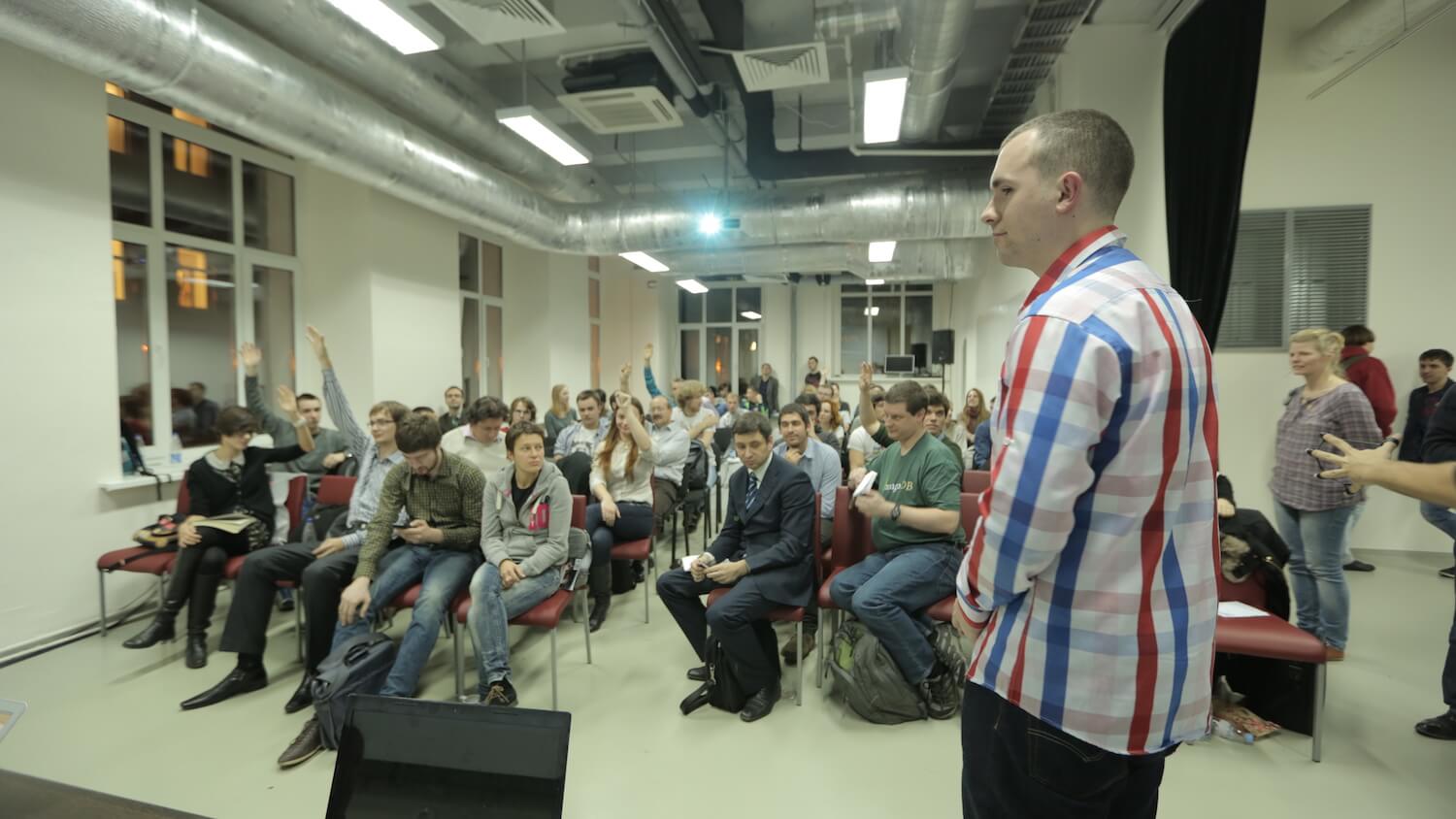https://habr.com/en/company/vsce/blog/441346/- VSCE corporate blog
- Biography of geeks
- Interview
- Content-marketing
- Media management
Dmitry learned the language of business but I think about the world as an engineer. He works with tech brands to create content and promote corporate culture at scale. Apart from it, he is one of the veterans at Techstars Startup Digest, and he is acting as an advisor for the SXSW tech festival.
Here is his interview with the LAMA app platform.
 Photo by
Photo by  GLPH.Media (in Russian) circa 2011
GLPH.Media (in Russian) circa 2011
LAMA: You have an academic background in engineering. How did you make the jump to working with content? Does your training help you approach your work from a fresh perspective?
dmitrykabanov: Back in 2010, my research supervisor recommended «
Getting Real», the book by Jason Fried and David Hansson. After that, he invited me to join his SEO and digital marketing agency startup. I didn’t like the SEO part of the job, so I decided to focus on building my own expertise in the content creation business. My engineering background helps me to be on the same footing as the founders of startups and bigger tech firms that want to storytell and promote their products.
This is instrumental to building off of user generated content. As a matter of fact, I myself still use podcasting as my networking vehicle. Back in the day, it allowed me to meet tons of tech leaders without having a bio or name in the industry and get first clients for my content marketing agency.
LAMA: What would be your best advice for a firm thinking of starting their own podcast? What makes a great piece of marketing content in 2018?
dmitrykabanov: I believe that this comeback will be really big for podcasting. And, to win in this wave of new audio shows starting this year or next year, businesses should focus on one strategic pillar and one tactical pillar. First, the strategic one is about projecting their brand values, not products, to the interests of their audiences. This will help them find guest speakers and topics that relate to their brands and be on point with questions that their listeners are looking for answers to.
Second, the tactical one is about making more than just audio out of the podcasting process. It’s about redistribution of audio in text transcripts and blog posts. Plus, documenting the process behind the show, filming it, and sharing those short videos in a company’s social media profiles.
LAMA: How would it differ from content that made the grade 5-6 years ago, when you started your content creation business?
dmitrykabanov: What’s really different today is that there’s no point in podcasting once a month. The pace and the volume of content that goes out in today’s web has grown so much that in order to be noticed by an average listener, you have to be both patient and resourceful to produce content on a regular basis: biweekly, once a week, or even daily. That’s quite an issue for tech companies that are sometimes struggling to put all the pieces together and set up their branded shows.
LAMA: You run the Techstars Startup Digest for Moscow. What are the most prevalent local trends you’ve picked up on?
dmitrykabanov: I’ve been curating Moscow’s
Techstars Startup Digest for seven years, and it’s been a super-fruitful experience for me as a local curator. Apart from publishing my weekly digests and networking, I have explored most of the infrastructure for hosting tech events.
 Photo by
Photo by  GLPH.Media (in Russian) circa 2012
GLPH.Media (in Russian) circa 2012
I think one of the most prevalent local trends is the rise of co-working spaces. Today, there are dozens of great spaces that take $230—$250 per month for a working desk and that allow residents to attend local meetups with top industry experts in biz dev, programming, design, and more. So next is probably the co-living trend that is just starting to find its way back into Moscow.
LAMA: Some people think only of music when they see the letters SXSW, but the brand is big news for startups. Can you explain a little about your work on the SXSW board?
dmitrykabanov: It’s a great question, because today «South by» is one of the biggest cultural conglomerates, covering everything at the intersection of tech and pop culture: film and music industries, startups, and more. I myself was invited to join the advisory board to judge and review startups applying for the Pitch event and Release IT event. In fact, I've gone through 500+ submissions in one night and carefully analyze proposed business models, and check out product prototypes.
For me, it was a real pleasure to see startups trying to solve real-world problems and people doing things they love. What’s more important, apart from judging, is that I had a chance to connect people with organizers and even help some of my friends visit “South by” and meet some of the industry leaders. So it was a real pleasure to judge, open doors, and introduce people.
LAMA: Why have you decided to storytell more on the co-work and co-live gigs?
dmitrykabanov: At the moment, I'm covering local startup gigs and both the co-work and co-live infrastructure. The topic has gained enormous traction around the globe and is now truly powering the new culture for Next Generation entrepreneurs. To be part of this movement, we decided to try lead it from the standpoint of storytelling and content creation — things that we do best.
Related reading:
 The History of SXSW: How It All Started
The History of SXSW: How It All Started
 Techstars Startup Digest: From Launch to Today
Techstars Startup Digest: From Launch to Today
 How the Early Success Stories Shaped the Modern Tech Industry
How the Early Success Stories Shaped the Modern Tech Industry

 GLPH.Media (in Russian) circa 2011
GLPH.Media (in Russian) circa 2011
 GLPH.Media (in Russian) circa 2012
GLPH.Media (in Russian) circa 2012The History of SXSW: How It All Started
Techstars Startup Digest: From Launch to Today
How the Early Success Stories Shaped the Modern Tech Industry